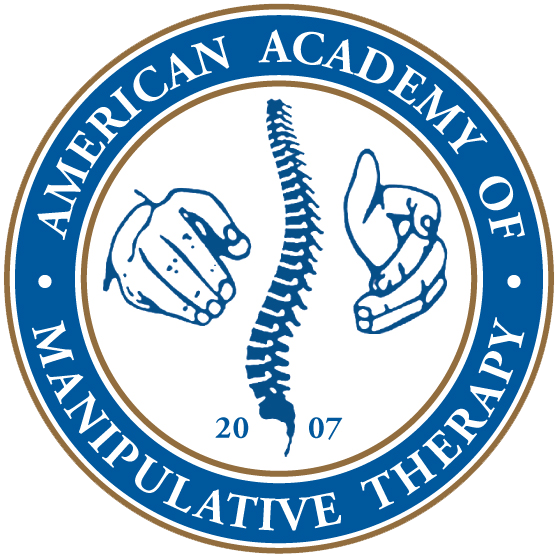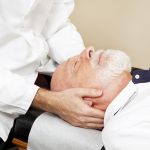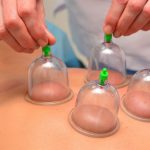Dry Needling During Pregnancy: the Risks and Benefits
There is disagreement among health care professionals and throughout the literature on the safety of dry needling during pregnancy.1 While some practitioners believe dry needling is safe during all phases of pregnancy, others assert that the modality should be avoided during specific gestational weeks, certain trimesters, or all together.1 Nevertheless, a 2009 survey revealed that 45% and 55% of midwives, from Canada and New Zealand, respectively, referred women for acupuncture treatments.1 Moreover, acupuncture was found to be the most commonly prescribed complementary therapy by midwives in Germany, with 97.3% availability across 376 professional sites.1
Importantly, “acupuncture” literally translates to “needle penetration” (i.e. “acu” = needle; “puncture” = penetration), and the vast majority of the “acupuncture” trials are not claiming to move qi along meridians or channels; furthermore, the most common term used to describe dry needling is “acupuncture.”2 That is, physiotherapists and/or medical physicians within both government administered national health services and mainstream university health systems in the UK, Canada, USA and Germany use the term ”acupuncture” to describe dry needling methodologies.2 Notably, the terms “dry needling” and “acupuncture” both refer to the insertion of thin monofilament needles, for therapeutic purposes, without the use of injectate.2 Dry needling is typically used to treat muscles, ligaments, tendons, subcutaneous fascia, scar tissue, peripheral nerves, and neurovascular bundles for the management of a variety of neuromusculoskeletal pain syndromes.2 Therefore, while the terminology, theoretical constructs and philosophies are different, the actual procedure of inserting thin monofilament needles, as used in the practice of acupuncture, without the use of injectate is very similar across professions.2 Thus, for the remainder of the discussion herein, we will use the terms “acupuncture” and “dry needling” interchangeably; however, traditional Chinese acupuncture, as part of the practice of Oriental medicine, is not considered synonymous.
Health care professionals worldwide use acupuncture for the side effects associated with pregnancy. Acupuncture is often used in China to treat many conditions such as nausea and morning sickness during the first trimester of pregnancy without any special precautions.3 Moreover, the use of needling modalities for musculoskeletal issues continues to rise, and two recent reviews4, 5 found acupuncture is particularly effective for reducing evening pain and morbidity in pregnant women, a population where 45-75% of women suffer from low back pain at some stage of pregnancy.6, 7 In addition, Wedenberg et al8 and Kvorning et al9 reported significantly greater reductions in pain intensity in pregnant women following acupuncture compared to physical therapy and standard prenatal care, respectively.7
Nevertheless, interviews conducted with UK physiotherapists as part of the EASE Back trial revealed a reluctance to treat pregnant women with acupuncture due to a fear of negatively affecting the course of the pregnancy, resulting in litigation.7 More specifically, UK physiotherapists that participated in the EASE Back trial reported fear of causing spontaneous abortion or early labor.7 Therefore, a brief review of the literature and discussion of the risks associated with the use of acupuncture (or dry needling!) during pregnancy seems to be required.
Midwifery textbooks generally articulate several physiological considerations for needling, without injectate, during pregnancy—especially during the first 10-12 weeks and final 4 weeks of pregnancy.10 These considerations include changing the optimal intrauterine oxygen saturation, alteration of maternal progesterone levels, and the potential of acupuncture to promote uterine contraction.9 However, in a literature review, Burton11 described the potential mechanisms that maintain the partial pressure of oxygen in the fluid surrounding a 7-10 week embryo, which would likely protect the fetus from any increased blood flow caused by acupuncture.11 While acupuncture has been shown to increase levels of progesterone,12, 13 the risk associated with the elevated levels of progesterone is unclear. Progesterone in early pregnancy is known to maintain the pregnancy while the placenta develops, while progesterone during late pregnancy may prevent uterine contraction.14 Notably, in both cases, increased progesterone would provide protection against premature labor. In contrast, Butts et al15 cited a number of acupuncture trials that had previously reported increased levels of oxytocin from the posterior pituitary (i.e. the posterior lobe of the pituitary gland), leading to pain reduction in the periphery and at the level of the spine.16-18 Given that oxytocin also causes the uterus to contract so as to initiate labor, it likely represents the greatest physiologic concern of performing acupuncture (or dry needling!) on pregnant women; however, scientific evidence of this association is still very limited.1, 19
The traditional Chinese acupuncture literature dating back to 1742 describes the ‘forbidden points’ when referencing treatment during pregnancy.1 While specific acupoints such as LI4, SP6, GB21, BL60, BL67, LU7, lower abdominal points CV3-7 and sacral points BL27-34, have been historically described to enhance labor and reduce labor pain, they lack further physiological explanation on the origin of this concern.1, 20 Rather, physiological changes associated with forbidden points seem to be rooted in historical assumptions found in mythical folklore that have been passed down and/or propagated in modern texts.1
Recent Western biomedical literature has begun to debunk the historical myths underlying the theoretical explanations behind the avoidance of some of the traditional Chinese acupuncture points during pregnancy.21 Notably, after reviewing 15 clinical trials that included up to 7234 acupuncture treatments consisting of one or more forbidden points in 823 pregnant women, Carr et al found an equivalent number of preterm births and stillbirths in the untreated control groups and in the general population.21 Likewise, in a case-control retrospective analysis of 5885 women treated with acupuncture at forbidden points at all stages of pregnancy between 1995 and 2003, Romer et al22 reported no difference between the control group and acupuncture group for preterm labor, miscarriage <12 weeks gestation, preterm prelabour rupture of membranes and miscarriage >12 weeks gestation.
Even when miscarriage and labour were the intended consequence, acupuncture and electroacupuncture at forbidden points demonstrated no ability to end pregnancy.23 Ying et al failed to end 20 first trimester pregnancies (prior to surgical termination) by conducting electroacupuncture at SP6 and LI4.23 In the case of intrauterine fetal death and healthy pregnancies approaching term or post-term whereby inducing labour was the intended outcome, 55 case studies of acupuncture and/or electroacupuncture at forbidden points resulted in outcomes comparable to conservative care (i.e. without needling).24, 21, 25 Despite measureable changes in “cervical ripening”, a Cochrane Review of 14 randomized controlled trials involving 2220 women reported no effect of needling forbidden points on timing of delivery.26 Moreover, when electroacupuncture was deliberately conducted at SP6, LI4 and sacral points during target time periods of pregnancy—i.e. implantation, embryonic development and fetal development—in Wistar rats and Sprague Dawley rats, respectively, researchers found no greater fetal losses or resorption compared to untreated control groups.21, 27, 28
Pelvic girdle pain is a common side effect of pregnancy. One in three pregnant women who experience pelvic girdle pain describe the symptoms as severe and have associated the pain with diminished capacity for standing, walking and sitting.29 In a randomized single blind trial involving 386 pregnant women with pelvic girdle pain at 12-31 weeks of gestation, Elden et al compared the efficacy of standard treatment, standard treatment plus stabilization exercises, and standard treatment plus acupuncture.26 Interestingly, LI4, a well known forbidden point, was incorporated bilaterally as part of the needling protocol. Fetal heart rate, maternal heart rate and blood pressure were monitored before and after all treatments, and notably, no serious complications occurred during or after any of the treatments. Moreover, standard treatment plus acupuncture provided a superior reduction in pain intensity compared to the other two groups.26 A 2013 Cochrane Review by Pennick and Liddle further examined common conservative interventions for preventing and treating pelvic and back pain in pregnancy.5 After reviewing 26 RCTs involving 4093 pregnant women, the authors concluded there is moderate-quality evidence suggesting acupuncture or exercise significantly reduces evening pelvic pain or lumbo-pelvic pain better than usual care alone, especially when conducted at 26 weeks of gestation.5 Moreover, physiotherapy, osteopathic manipulation, acupuncture, a multi-modal intervention, or the addition of a rigid pelvic belt to exercise seemed to relieve pelvic or back pain better than usual care alone.5
Given the state of the current evidence, several professional organizations have made recommendations on the use of dry needling for musculoskeletal conditions during pregnancy. The American Physical Therapy Association (APTA) released their stance in the 2013 Description of Dry Needling in Clinical Practice, stating, “Dry needling during the first trimester of pregnancy, during which miscarriage is fairly common, must be approached with caution, even though there is no evidence that dry needling has any potential abortifacient effects.”30 Furthermore, the Dry Needling Institute of the American Academy of Manipulative Therapy (AAMT), suggests that “the number of needles used, the intensity of manual manipulation of the needles, and the duration that the needles are left in place should be kept to a minimum in this population.” AAMT further recommends that, “electrical dry needling (or electroacupuncture) should be avoided as would TENS (transcutaneous electrical nerve stimulation) in this population.”31 Importantly, and based on the existing literature to date, neither APTA nor Dry Needling Institute of AAMT are suggesting that dry needling be avoided in pregnant women with musculoskeletal impairments; that is, dry needling during pregnancy should be considered a precaution, not an absolute contraindication.
AUTHORS:
Michelle Moore, PT, DPT, Cert. DN
Fellow-in-Training, AAMT Fellowship in Orthopaedic Manual Physical Therapy
Physical Therapist, Biomechanix Physical Therapy
Phoenix, AZ
Raymond Butts, DPT, PhD, MSc (NeuroSci), Cert. DN, MAACP (UK), Dip. Osteopractic
Senior Instructor, American Academy of Manipulative Therapy
Member, Acupuncture Association of Chartered Physiotherapists (UK)
Senior Faculty, AAMT Fellowship in Orthopaedic Manual Physical Therapy
Atlanta, GA
James Dunning, DPT, MSc (Manip Ther), FAAOMPT, MAACP (UK), Dip. Osteopractic
Director, AAMT Fellowship in Orthopaedic Manual Physical Therapy
Member, Acupuncture Association of Chartered Physiotherapists (UK)
Member, Manipulation Association of Chartered Physiotherapists (UK)
Montgomery, AL
REFERENCES:
- Betts D, Budd S. Forbidden points’ in pregnancy: historical wisdom? Acupunct Med. 2011;29(2):137-9.
- Dunning J, Butts R, Mourad F, Young I, Flannagan S, Perreault T. Dry needling: a literature review with implications for clinical practice guidelines. Phys Ther Rev. 2014;19(4):252-65.
- White A, Cummings TM, Filshie J. An Introduction to Western Medical Acupuncture. Edinburgh: Churchill Livingstone/Elsevier; 2008.
- Low Back Pain: Early Management of Persistent Nonspecific Low Back Pain. London, United Kingdom: National Institute for Health and Clinical Excellence; 2009. Guidline 88.
- Pennick V, Liddle SD. Interventions for preventing and treating pelvic and back pain in pregnancy. Cochrane Database Syst Rev. 2013(8):CD001139.
- Wu WH, Meijer OG, Uegaki K, Mens JM, van Dieen JH, Wuisman PI, et al. Pregnancy-related pelvic girdle pain (PPP), I: Terminology, clinical presentation, and prevalence. Eur Spine J. 2004;13(7):575-89.
- Waterfield J, Bartlam B, Bishop A, Holden MA, Barlas P, Foster NE. Physical Therapists’ Views and Experiences of Pregnancy-Related Low Back Pain and the Role of Acupuncture: Qualitative Exploration. Phys Ther. 2015;95(9):1234-43.
- Wedenberg K, Moen B, Norling A. A prospective randomized study comparing acupuncture with physiotherapy for low-back and pelvic pain in pregnancy. Acta Obstet Gynecol Scand. 2000;79(5):331-5.
- Kvorning N, Holmberg C, Grennert L, Aberg A, Akeson J. Acupuncture relieves pelvic and low-back pain in late pregnancy. Acta Obstet Gynecol Scand. 2004;83(3):246-50.
- McNabb M. Physiological changes in labour. In” Hnderson C, Macdonal S, eds. Mayes’ Midwifery: A Text Book for Midwives. Edinburgh: Bailliere Tindall 2007: 410-17
- Burton GJ. Oxygen, the Janus gas; its effects on human placental development and function. J Anat. 2009;215(1):27-35.
- Xiong F, Gui J, Yang W, Li J, Huang GY. Effects of acupuncture on progesterone and prolactin in rats of embryo implantation dysfunction. Chin J Integr Med. 2015;21(1):58-66.
- Zhu L, Yang F, Jin CL, Ma LX, Chen YR, Yuan HW, et al. [Effect of electroacupuncture at different frequencies on serum estradiol and progesterone levels in late-stage pregnancy rats]. Zhen Ci Yan Jiu. 2012;37(4):281-5.
- Stables D, Rankin J. Physiology in Childbearing with Anatomy and Related Biosciences. Edinburgh: Elsevier 2005.
- Butts R, Dunning J, Perreault T, Maurad F, Grubb F. Peripheral and Spinal Mechanisms of Pain and Dry Needling Mediated Analgesia: A Clinical Resource Guide for Health Care Professionals. Int J Phys Med Rehabil 2016, 4:2
- Yang J, Yang Y, Chen JM, Liu WY, Lin BC. Effect of hypothalamic supraoptic nucleus on acupuncture analgesia in the rat. Brain Res Bull. 2008;75(5):681-6.
- Qiu F, Qiu CY, Cai H, Liu TT, Qu ZW, Yang Z, et al. Oxytocin inhibits the activity of acid-sensing ion channels through the vasopressin, V1A receptor in primary sensory neurons. Br J Pharmacol. 2014;171(12):3065-76.
- Gonzalez-Hernandez A, Rojas-Piloni G, Condes-Lara M. Oxytocin and analgesia: future trends. Trends Pharmacol Sci. 2014;35(11):549-51.
- Cummings M. Forbidden points in pregnancy: no plausible mechanism for risk. Acupunct Med 2011; 29: 140-142.
- Dale G. Presentation of Mississippi Insurance Commissioner George Dale MSMA 129th annual session. J Miss State Med Assoc. 1997;38(7):245-50.
- Carr DJ. The safety of obstetric acupuncture: forbidden points revisited. Acupunct Med. 2015;33(5):413-9.
- Romer A, Zieger W, Melchert F. Prohibition of acupuncture points during pregnancy – an outdated tradition or objectiv evidence? Deutsche Zeitschrift Fur Akupunktur 2013;56:10-13.
- Ying YK, Lin JT, Robins J. Acupuncture for the induction of cervical dilatation in preparation for first-trimester abortion and its influence on HCG. J Reprod Med. 1985;30(7):530-4.
- Royal College of Obsteticians and Gynaecologists. Late Intrauterine Fetal Death and Stillbirth (Green-Top Guidline No. 55) 2010.
- Tsuei JJ, Lai Y, Sharma SD. The influence of acupuncture stimulation during pregnancy: the induction and inhibition of labor. Obstet Gynecol. 1977;50(4):479-8.
- Smith CA, Crowther CA, Grant SJ. Acupuncture for induction of labour. Cochrane Database Syst Rev. 2013(8):CD002962.
- Guerreiro da Silva AV, Nakamura MU, Cordeiro JA, Guerreiro da Silva JB, Mendes GE, Burdmann EA. The effects of so-called ‘forbidden acupuncture points’ on pregnancy outcome in wistar rats. Forsch Komplementmed. 2011;18(1):10-4.
- Wang Y, Hassouna MM. Electrical stimulation has no adverse effect on pregnant rats and fetuses. J Urol. 1999;162(5):1785-7.
- Elden H, Ladfors L, Olsen MF, Ostgaard HC, Hagberg H. Effects of acupuncture and stabilizing exercises as adjunct to standard treatment in pregnant women with pelvic girdle pain: randomized single blind controlled trial. BMJ. 2005 Apr 2;330(7494):761. Epub 2005 Mar 18.
- Description Of Dry Needling In Clinical Practice: An Educational Resource Paper. 1st ed. APTA Public Policy, Practice and Professional Affairs Unit, 2016. Web. 22 May 2016.
- Dunning J. DN-1: Dry Needling for Craniofacial, Cervicothoracic & Upper Extremity Conditions: an Evidence-Based Approach. Montgomery, AL: American Academy of Manipulative Therapy; 2014.






